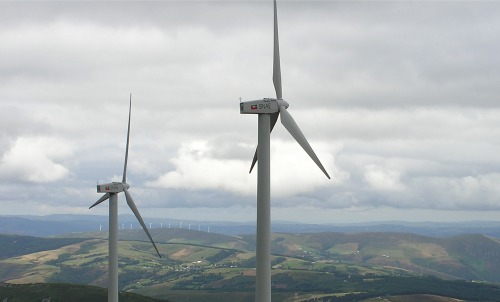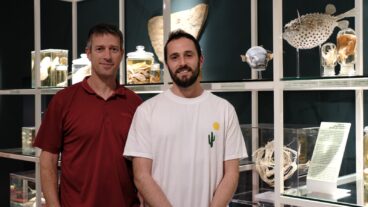An Israeli company is receiving major attention and dollars to develop a small, low-cost device that could be a boon for wind farms across the world.

Pentalum Technologies, based in Rehovot south of Tel Aviv, is channeling all its ingenuity into the SpiDAR system, expected to be a marked improvement over existing LIDAR (light detection and ranging) and other systems that wind power plants rely on to remotely monitor wind conditions.
Wind speeds and directional patterns vary greatly even within small areas, impacting significantly on the performance of the turbines that generate energy. That’s why precision tools are crucial for determining the site of a wind farm and assuring optimum production.
Pentalum’s proprietary technology utilizes sophisticated distributed wind sensors coordinated and controlled through a central computer. It’s this configuration that gave rise to the name SpiDAR.
“All the data from the different ‘legs’ of the ‘spider’ are transmitted to the central headquarters,” says Gil Shamai, Pentalum’s vice president for business development. “It’s light and very easy to deploy by a single person on the ground. You can place several in your terrain and receive measurements up to 200 meters [about 656 feet] off the ground.”
More reliable and cost-effective results
The device is designed for three distinct applications, Shamai tells ISRAEL21c. In each area, it is anticipated that it will provide more reliable and cost-effective results than wind farmers obtain from currently available technology.
“Before a wind farm is developed, it is necessary to measure the wind conditions for at least one year,” he relates. “The method traditionally used is to mount cup anemometers on meteorological masts.” As wind farms use taller and taller turbines, costs for the masts, as well as permits, installation and maintenance, also rise. Shamai says that SpiDAR will provide more accurate wind measurements, and without any of those drawbacks.
Once a wind farm is in operation, mounted SpiDAR units can measure approaching winds a fraction of a second before they reach the turbine blades. This function allows the turbines to adjust direction and speed more precisely to meet the coming wind. Shamai estimates that this application will deliver up to 15 percent better performance than systems that only measure wind behind the blades, and not the approaching wind.
The noiseless SpiDAR will also aid in long-term forecasting of production capabilities. “A better understanding of the wind map in the area helps to forecast how much power the farm will produce tomorrow or next week,” Shamai explains. This will provide an effective tool for developers and operators to predict the amount of energy that a farm can expect to add to the local power grid on any given day.
Targeting the US and Europe
Pentalum was founded in 2009 by a team of industry executives. Shamai and co-founders Sagie Tsadka (chief executive officer) and Dr. Nathan Sela (vice president of R&D), as well as vice president for operations Niv Narkiss, all have previous experience in optics, telecom, fluid mechanics, atmospheric remote sensing or software – fields that are directly relevant to their developing product.

They hope to launch pilot field tests of the SpiDAR system in early 2011 in the United States. Because wind farms require large tracts of windy exposed areas, they are most common in the states of Texas, Iowa, and California. In Europe, Spain and Germany lead the market in the continent’s fast-growing wind energy field.
“Our target market is in the US and Europe, since the market in Israel, while growing, is not very large,” says Shamai, adding that the foreign markets are keenly interested in the product’s promise of greater accuracy and lower price.
The privately held company raised $9 million in its first financing round from Cedar Fund, Evergreen Venture Partners, and an undisclosed American fund.













